Yellowstone Artist Series - BIERSTADT
- Shirl Ireland
- Apr 8, 2018
- 4 min read
Maybe better titled "The agony and the ecstasy" - read on and you will see what I mean....
Albert Bierstadt (1830-1902) was an artist who painted Yellowstone - one of the artists from those early years whose work helped to inspire the creation of Yellowstone National Park and the westward expansion.
His style was associated with the Hudson River School artists of the time, known for 'dramatizing' the scenes and often using a romanticizing effect with 'glowing light'.

Old Faithful by Albert Bierstadt 1881
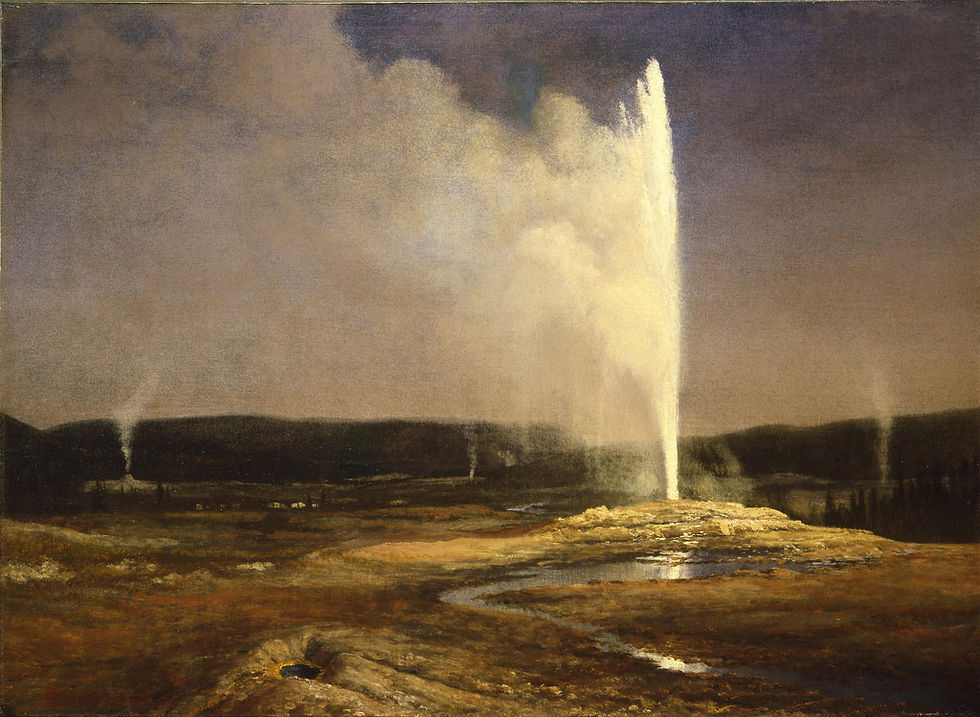
Geysers in Yellowstone by Albert Bierstadt 1881
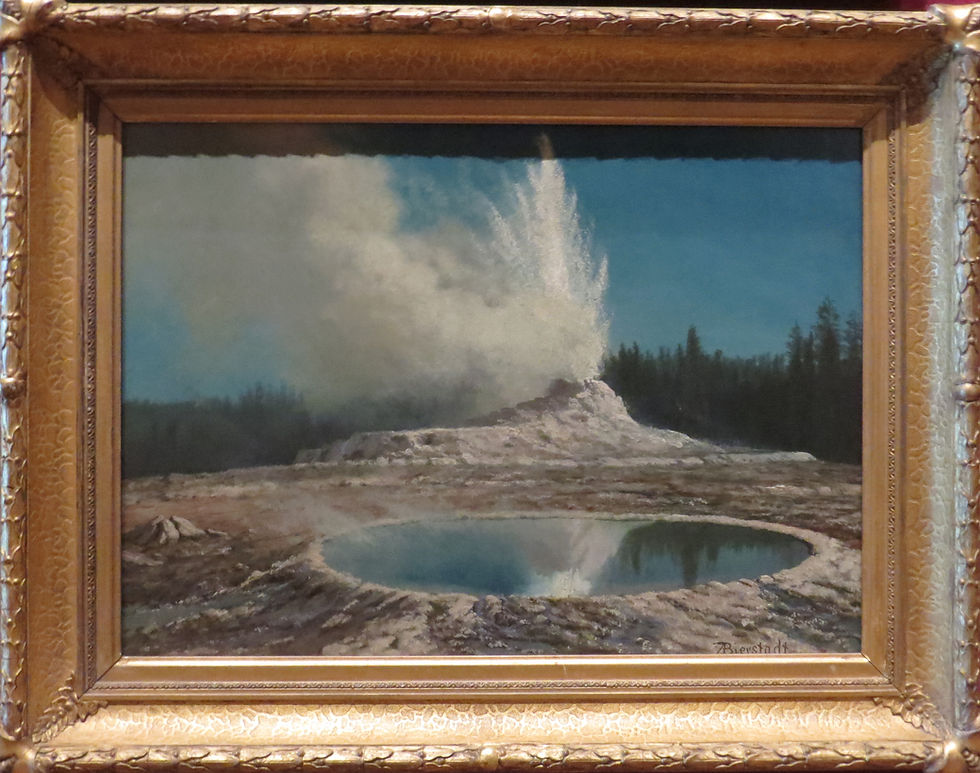
Geyser Yellowstone Park by Albert Bierstadt 1881
Born in Germany and moving to Massachusetts at the age of 2, Bierstadt first 'went West' with Colonel Lander's pioneering expedition in 1859 and explored the Wind River range in Wyoming. On this expedition, he became enamored with the western landscape.
When he returned from his trip, he moved to New York City and in 1860 he exhibited Base of the Rocky Mountains at the National Academy of Design. (This painting is "unlocated" so keep your eyes out... that would sure be a treasure to find!)
In 1863 he traveled back West to San Francisco and on to Yosemite, where the inspiration came for some of his most iconic images.

In The Yosemite Valley by Albert Bierstadt 1866
In 1864, his painting The Rocky Mountains, Lander’s Peak was shown in New York City and prompted immediate, international fame for the 34 year old painter. A stunning $25,000 was paid for The Rocky Mountains, Lander’s Peak - at the time, the highest amount paid to an American artist.

The Rocky Mountains, Landers Peak by Albert Bierstadt
In the following years, Bierstadt commanded remarkable sums for his paintings, becoming one of the most famous and revered American painters of the time. Even the U.S. government commissioned two paintings for the U.S. Capitol.
He married Rosalie Osborne Ludlow in 1866, (the divorced wife of his friend and writer Fitz Hugh Ludlow) and began construction of his mansion Malkasten (German for paintbox) in the Hudson Valley...


Together, the couple made numerous trips to Europe and traveled to California on the newly accessible Transcontinental Railroad. He traveled, sketched and painted many areas and in 1881, Bierstadt traveled to Yellowstone National Park.
He was a prolific painter during this period. I've seen an estimate of 4,0000 paintings over this life time!
He used oil paints on uncommonly large canvasses to capture panoramic detailed landscapes, some of which were over ten feet wide. His paintings appealed to human emotions, using strong colors, and contrasts of light and shade. The contrasts used in his paintings also added dramatic effects with a sense of depth, while creating a mood...realistic yet romantic.
He was at the 'top of his game' for an American painter at that time.

View of the Hudson Looking Across Tappen Zee Towards Hook Mountain
by Albert Bierstadt 1866
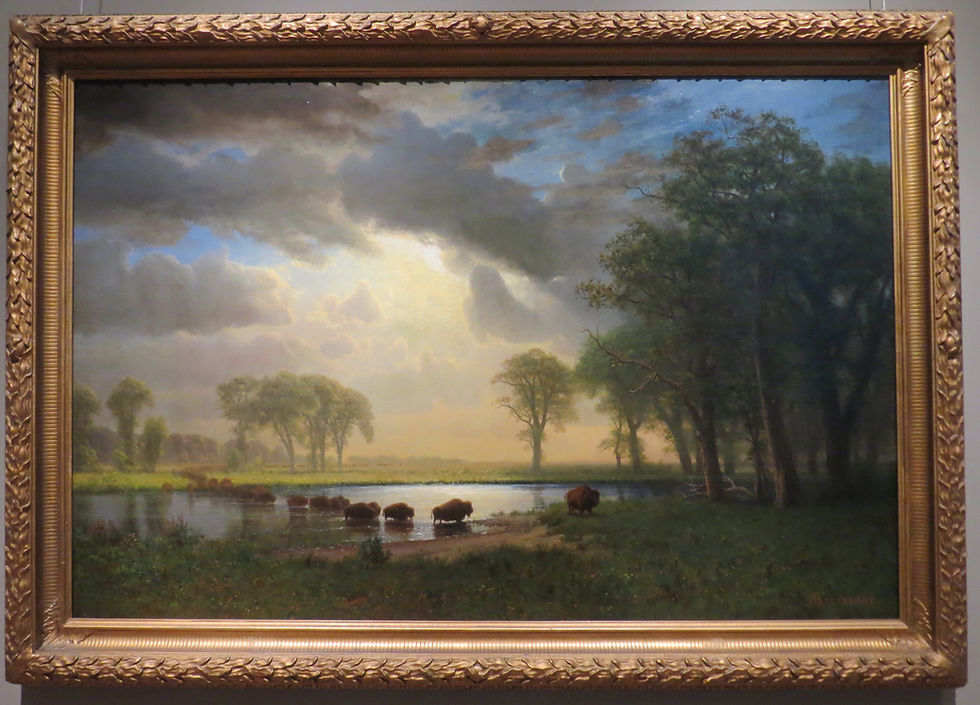
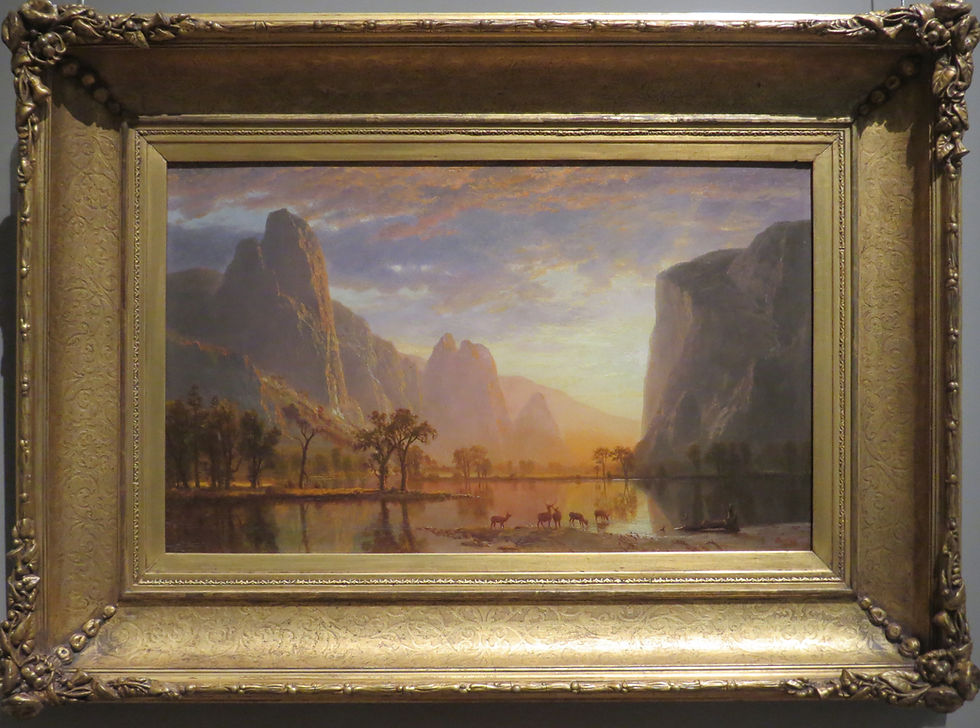
And now the agony.
Unfortunately, this ideal artist's life story does not have a happy ending. Around the 1880's it all began to turn, both personally and professionally, for Bierstadt...
His wife was diagnosed with tuberculosis, his style of painting began loosing favor in the public's eye as Impressionism came in, and in 1882, Malkasten burned to the ground with many of his favorite paintings still inside.
"In the summer of 1882, Malkasten was rented out to broker Henry J. Chapman, Jr. Chapman left the house on Thursday November 9 of that year, and gardener Peter Conrad was the sole occupant that night. Conrad left the house about 5:30am Friday November 10 to get breakfast. When he returned to Malkasten at 7:15am, the house was on fire “beyond his control.” The Chapman family related smoking chimneys “that would seem to indicate that a defective flue was the cause.”
Malkasten was destroyed. Was it mere accident? Was it an insurance claim by a desperate, fading artist no longer dependent on a reliable stream of commissions and with a wife in failing health? Shortly before the fire the New York Times, in an article dated July 16, 1882 entitled “Ruins Along the Hudson: Many Deserted Mansions On Historic Spots,” quoted Bierstadt: “I will sell the place or let someone have it who will pay the taxes on it.” The article continued: “There are signs of neglect about Malkasten, and it is estimated that it will cost $20,000 to put it in good condition.”
Not only was the house lost, but so were works of art. Bierstadt’s studio was locked since his left the site four years prior, according to the New York Sun. Used for storage, the studio contained sketches, studies, engravings, western artifacts, books, paintings including two large canvases by Bierstadt, and other valuables." by Rob Yasinsac

The remains of Malkasten
As the 1880's progressed, and French Impressionism became accepted, the public's taste in Art continued to change. But the unrelenting Bierstadt kept painting and producing some incredible works.... even though his paintings were garnering much less accolades.
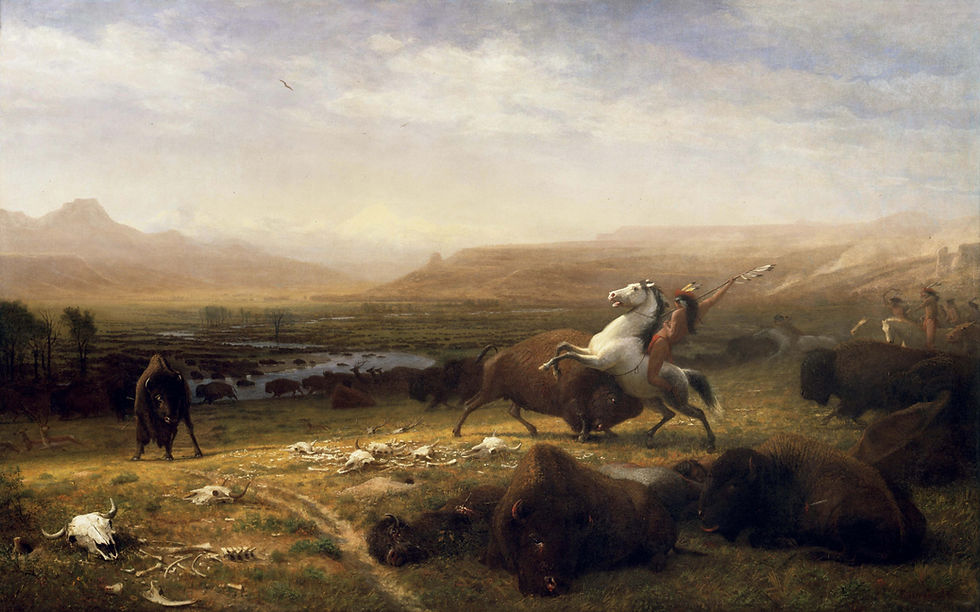
The Last Of The Buffalo by Albert Bierstadt 1888
With his wife's tuberculosis, they spent more time in the Bahamas thinking it would be better for her health. But she died in 1893.
As the acceptance of French Impressionism over shadowed the Art market, Bierstadt was quickly forgotten by an audience that had embraced him as a national treasure. He filed bankruptcy in 1895, managing to pay off his creditors with 150 paintings. At the age of 72, he died, somewhat forgotten, in New York City in 1902.
MORE links to Bierstadt... since we don't want to end on this note :)
